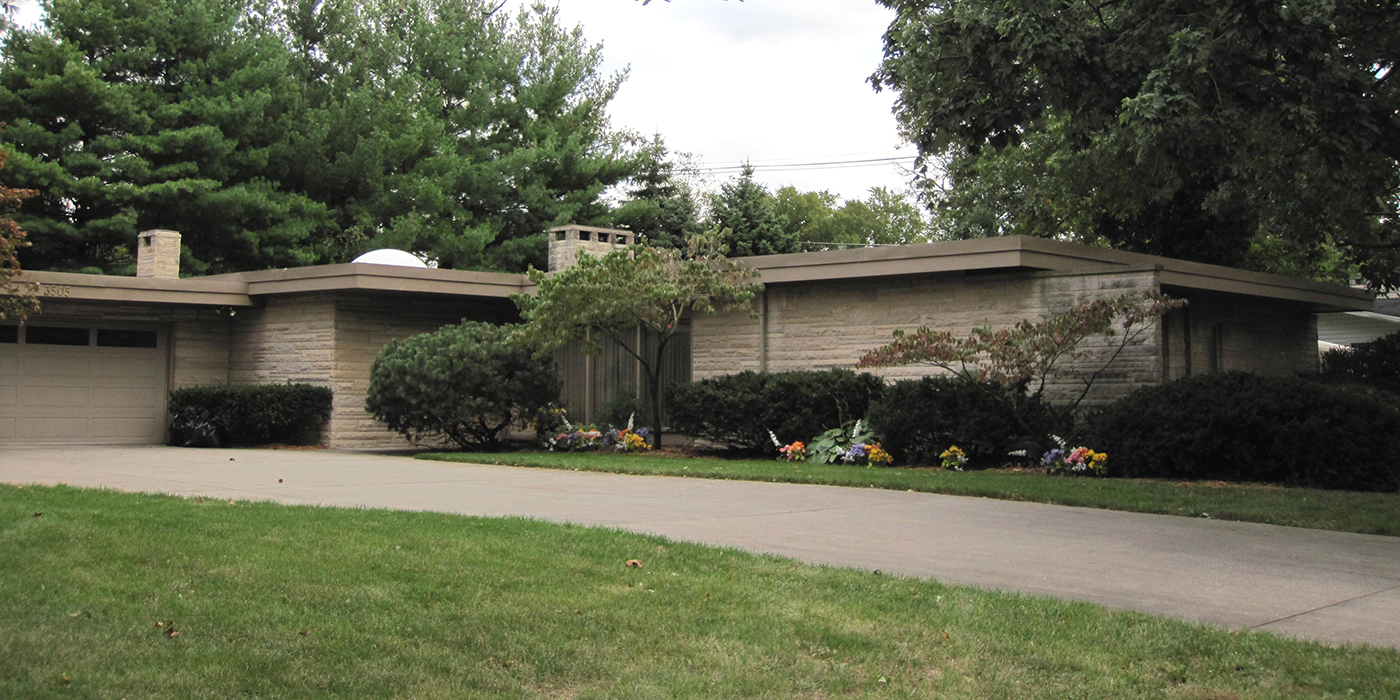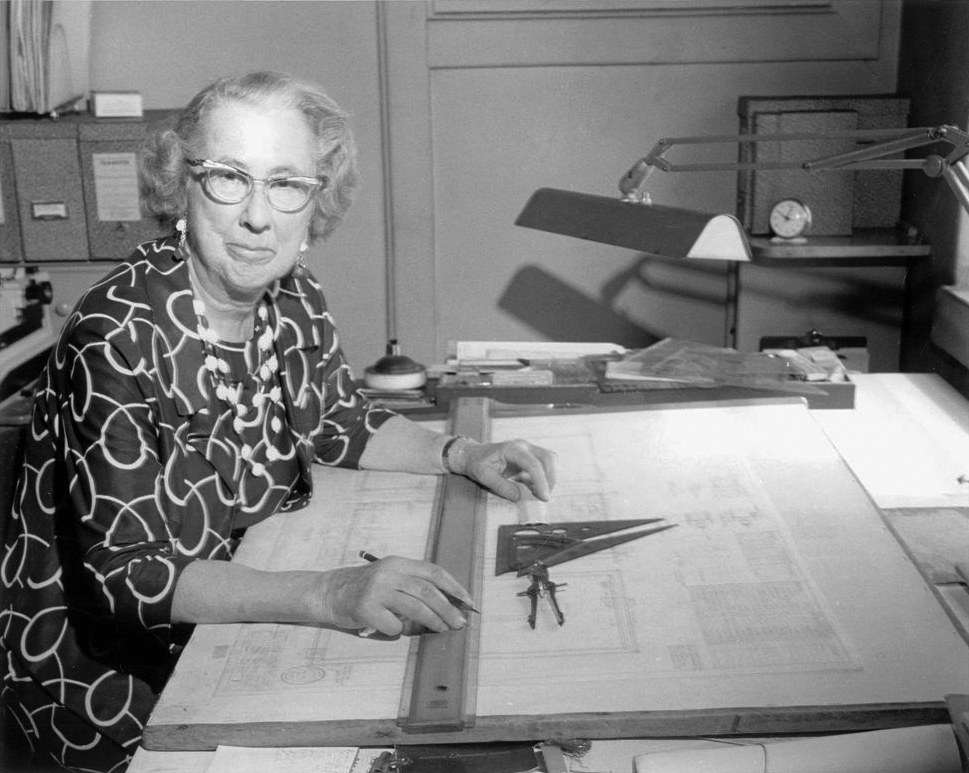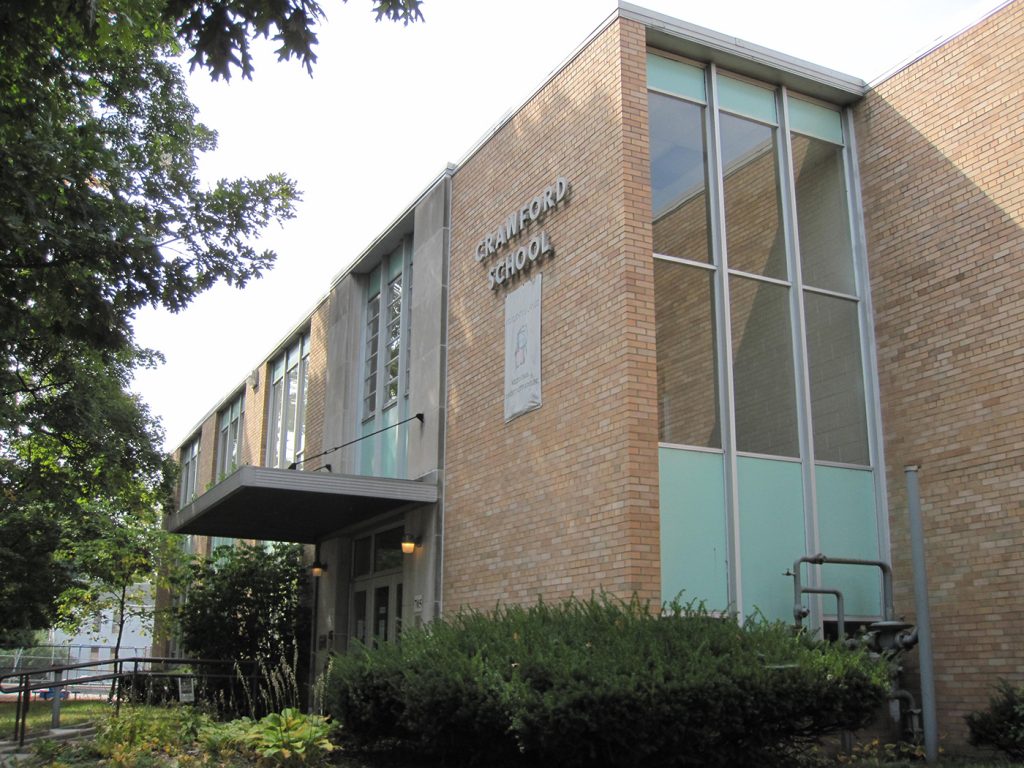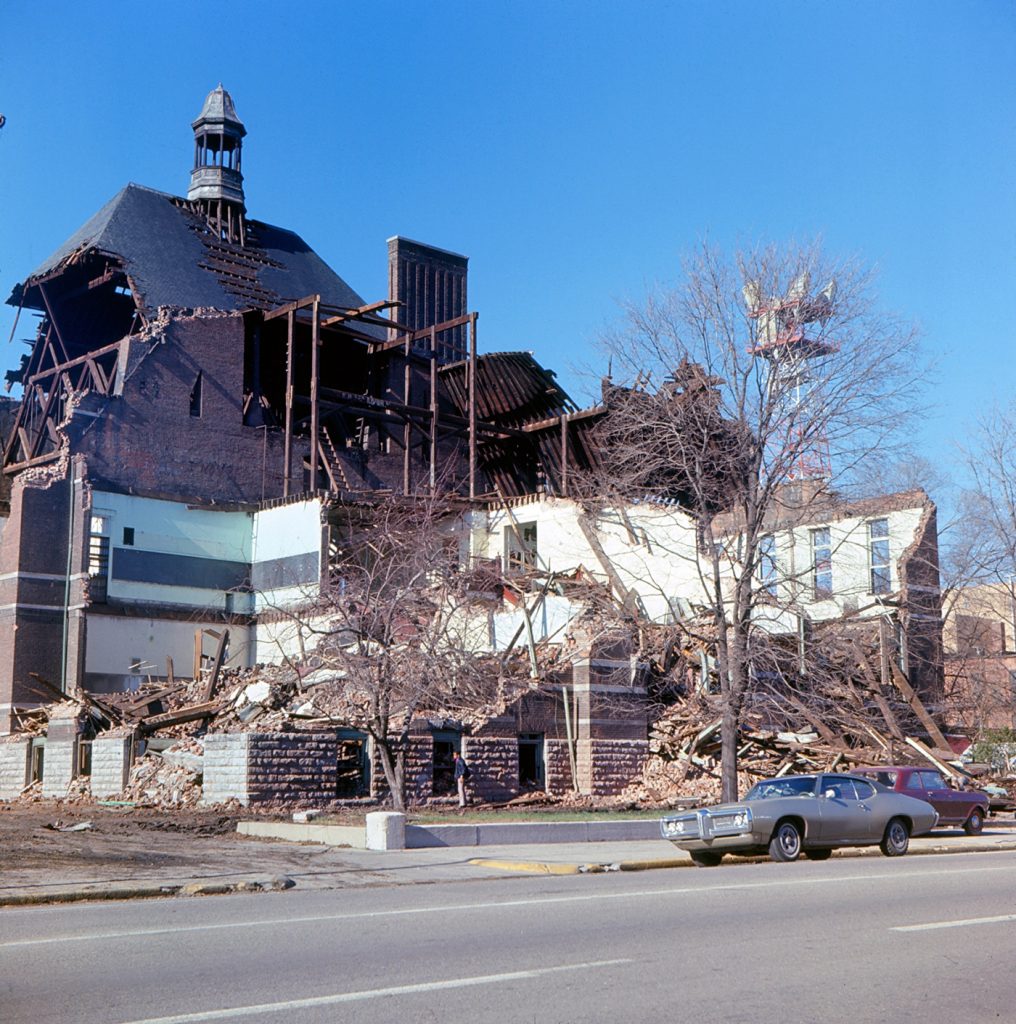NEWS
Pioneering Terre Haute Architect Left Legacy of Landmarks
Admiring Juliet Peddle’s mid-century designs

Praise for Peddle
Juliet Peddle—Modernist architect, artist, historian—broke ground as a woman in the field of architecture while also honoring the heritage of her hometown of Terre Haute. Born in 1899, Peddle was the second woman graduate of the University of Michigan’s School of Architecture and earned permanent recognition as Indiana’s first female registered architect.
However, she’s winning attention now for more than cold statistics: her designs—particularly those she produced at mid-century—have a devoted following. Indiana Landmarks has sponsored two Peddle tours, one in 2004 in conjunction with a Swope Art Museum symposium and another in 2009. Less well-known is Peddle’s work documenting Terre Haute’s nineteenth-century structures, which resulted in a collection that remains a vital resource for those studying the city’s history and built environment.
Peddle’s father, a professor of machine design at Terre Haute’s Rose Polytechnic, launched her career by teaching her drafting and photography—not the typical skills drilled into young women in the early 1900s. After working as an architect in Chicago following her 1922 graduation, she opened her own firm in Terre Haute in 1935 and remained in business until her death in 1979.

(Photo: Vigo County Historical Society)
Her mid-century standouts include the Topping House at 3505 Ohio Boulevard, one of her most outstanding residential designs. The 1960 home retains classic Modernist features: flat roof punctuated by bubble skylights, expansive glass walls and projecting planes, exterior and several interior walls clad in Bedford stone along with planters and a large fireplace, built-ins, terrazzo floors, and textured glass screens.
In Terre Vista, a mid-century subdivision on Terre Haute’s east side, Peddle showed her ability to translate her clients’ wishes into form. Dr. Robert Reed and his wife had traveled in Southeast Asia and in the early 1960s asked Peddle for a home inspired by the architecture they saw there. She delivered a modern house resembling a Japanese temple. A rough-cut stone exterior anchors the structure to the earth. The main ridge of the hipped roof flares up at the ends while the base of the roof flares out to a broad overhang with exposed rafters.

For the 1961 Crawford School in what is now the Farrington’s Grove Historic District, Peddle maximized natural light and ventilation in a building of orange brick and turquoise-colored panels. She incorporated multiple-use spaces so the building might serve as a social center. She was right—no longer a school, the building today houses Vigo County Head Start and hosts the meetings of many local organizations.
In addition to her legacy of landmarks, Peddle championed historic architecture and local history through a series of articles for the local newspaper, illustrated by pencil sketches, on pre-Civil War buildings in Vigo County. For 40 years, Peddle also documented the city’s built environment through photography, amassing a collection of more than 1,000 slides now held by the Vigo County Historical Society. She captured images of landmarks, streetscapes, the construction of some of her own designs, and the heartbreaking demolition of buildings she treasured.

An early preservationist, Peddle photographed landmarks at all stages, including losses like Terre Haute’s Wiley High School. (Photo: Vigo County Historical Society)
Sometimes people ask us why we devote attention to buildings of the ‘50s and ‘60s, deeming them too recent to merit Indiana Landmarks’ attention. Juliet Peddle’s work is one answer—terrific mid-century designs, some of which have already been altered in ways that diminish their Modernist character.
The big-picture answer: our mission is preserving and revitalizing historic places, and we’re more successful when we’re not playing catch-up. In the ‘50s and ‘60s preservationists madly campaigned to save Victorian buildings that were being bulldozed because people viewed them as old-fashioned and ugly. Juliet Peddle, a Modernist in her own work, recognized that buildings of every era represent past human achievement and contribute to the character of a place. Amen, Ms. Peddle.
-By Tommy Kleckner, Director, Indiana Landmarks Western Regional Office. Originally published in the November-December 2009 issue of Indiana Landmarks’ member magazine. Local preservationists are compiling a comprehensive list of Peddle-designed works in Indiana. If you know of a property Juliet Peddle designed that they should know about, or have any of her Christmas cards, please contact them at julietpeddle1899@gmail.com.
Stay up to date on the latest news, stories, and events from Indiana Landmarks, around the state or in your area.
